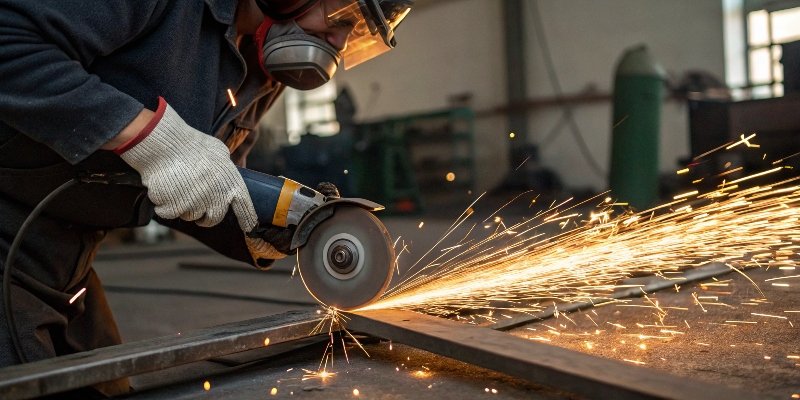
Struggling to cut hardened steel? Using the wrong disc shatters it, wasting time and material. With the right blade and technique, you can achieve a clean, safe cut every time.
Use a high-power angle grinder with a diamond or specialized abrasive disc designed for hard metals. Always clamp your workpiece firmly and wear full safety gear. Make steady, shallow cuts and use coolant to prevent overheating and preserve the steel’s temper. This ensures a clean, safe cut.
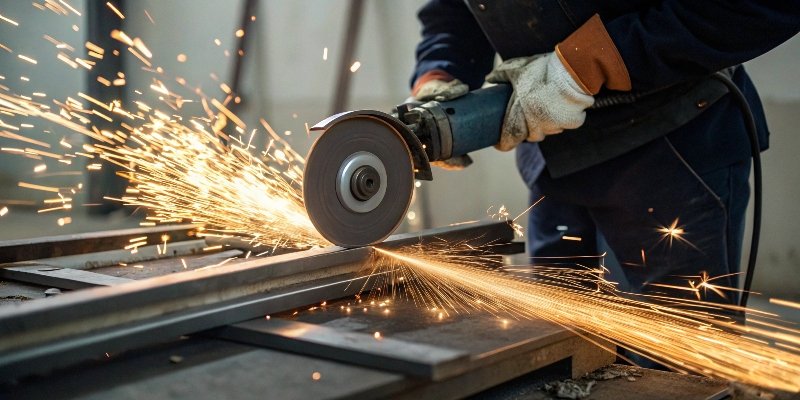
Getting the basics right is one thing. But mastering the details is what separates a frustrating job from a successful one. There’s more to it than just picking a blade and starting the grinder. So, let’s break down the specific tools, techniques, and safety measures you need to know.
What type of cutting disc is best for hardened steel?
Ever watched a cutting disc just skate over hardened steel? It barely scratches the surface, wears out instantly, and can be dangerous. The right disc choice is crucial for success.
The best choice is a diamond cutting disc. Diamond blades cut through hard materials efficiently with less heat. Make sure the disc is specifically rated for hardened steel. This ensures a clean cut, longer disc life, and prevents damage to your material.
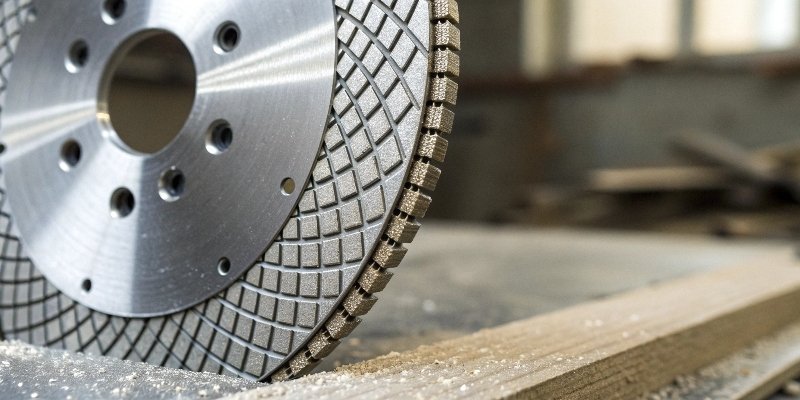
When I started in this business nearly 30 years ago, we didn’t have as many options. Now, the technology is fantastic. The choice of cutting disc1 is the single most important factor for this job. You simply can’t use a standard abrasive wheel meant for mild steel. It will wear down in seconds and generate a tremendous amount of heat, which can ruin your workpiece.
Abrasive Materials Matter
The best options are superhard abrasives. Here’s a quick comparison to help you decide what works for your application.
| Disc Type | Best For | Pros | Cons |
|---|---|---|---|
| Diamond | All-around hardened steel2 cutting | Extremely durable, fast cutting, less heat generation | Higher initial cost |
| CBN | High-alloy tool steels3 | Maintains hardness at high temps, excellent for tool steels | Can be more expensive, less common |
| Abrasive Cut-Off | Mild steel, not recommended | Low cost | Wears quickly, creates high heat, dangerous on hard steel |
In our experience at our RL factory, a quality diamond blade is the most reliable and cost-effective choice for most hardened steel applications. It cuts faster and lasts much longer, saving you money in the long run.
How can you cut hardened steel without ruining its temper?
You cut through the hardened steel, but the edge is now blue and soft. The heat from cutting has ruined its temper, making the part useless. Let’s prevent that from happening.
The key is to minimize heat. Use a diamond blade, as it generates less friction. Make several shallow passes instead of forcing one deep cut. Applying a coolant, like cutting oil or even a water spray, will effectively draw heat away from the workpiece and preserve its hardness.
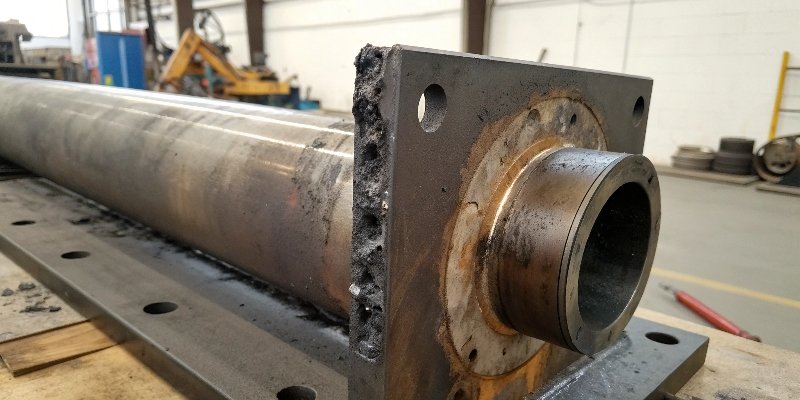
I’ve seen beautifully machined parts ruined in the final cutting stage because of heat. Hardened steel gets its properties from a specific heat treatment process. Reheating it with a grinder can easily reverse that process. Controlling the temperature is not optional; it’s essential for maintaining the integrity of the material.
Key Techniques for Heat Management
Here are the steps we follow in our own factory to ensure the material properties are preserved.
- Shallow Passes: Don’t try to cut through the material in one go. Make the first pass just to score a straight line. Then, make subsequent passes, going a little deeper each time. Never go deeper than about one-third of the disc’s thickness per pass on thick material.
- Steady Pace, Light Pressure: Let the cutting disc do the work. Pushing down hard on the grinder only creates more friction and heat. Move the grinder at a smooth, consistent speed along the cut line. If you see the steel glowing red or turning blue, you’re going too fast or pushing too hard.
- Use a Coolant: For critical jobs, a coolant4 is your best friend. A simple spray bottle with water can work in a pinch, but a proper cutting fluid is better. It lubricates the cut and carries heat away efficiently, protecting the steel.
What are the essential safety precautions when cutting hardened steel?
An angle grinder spins at thousands of RPM. Cutting hard steel creates intense sparks and the risk of disc failure. One mistake can be costly. Your safety should always be the top priority.
Wear essential Personal Protective Equipment (PPE): safety glasses, gloves, a respirator, and non-flammable clothing. Securely clamp the workpiece to a stable surface. Always use the grinder’s safety guard and direct the spark stream away from yourself and any flammable materials.
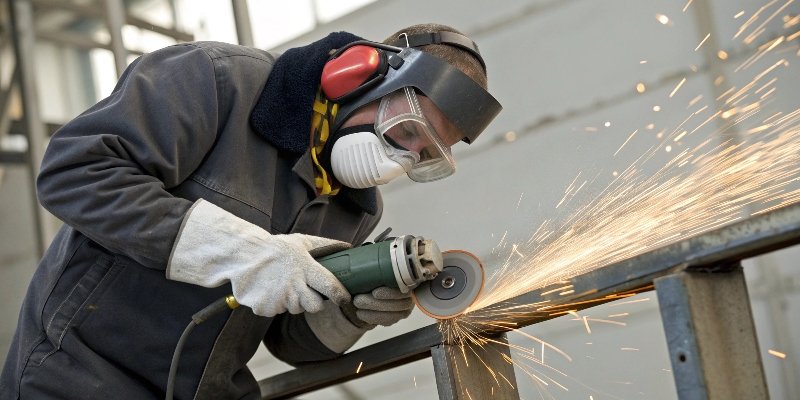
Safety is not something we compromise on. Over the years, I’ve learned that almost every accident is preventable. When you’re dealing with the forces involved in cutting hardened steel, you must respect the tool and the material. Rushing a job is the fastest way to get hurt.
Your Safety Checklist
Before you even plug in the grinder, run through this mental checklist. It only takes a minute and can save you a trip to the hospital.
- Personal Gear: Are you wearing the right gear?
- Full-coverage safety goggles (not just glasses)
- Thick, leather gloves
- A dust mask or respirator (metal dust is harmful)
- Hearing protection
- Long-sleeved, non-flammable clothing
- Tool and Work Area: Is your setup secure?
- Is the safety guard on the grinder in place?
- Is the cutting disc undamaged and properly tightened?
- Is the workpiece clamped down so it absolutely cannot move?
- Is the area clear of flammable materials?
Can a diamond blade effectively cut through hardened steel?
You might think diamond blades are just for tile and concrete. Using them on steel seems wrong, doesn’t it? This confusion can lead you to use weaker discs that fail quickly.
Yes, a diamond blade is not only effective but often the best tool for the job. Specialized diamond blades designed for metal cutting slice through hardened steel with ease. They produce less heat, have a much longer life, and provide a cleaner cut than traditional abrasive wheels.
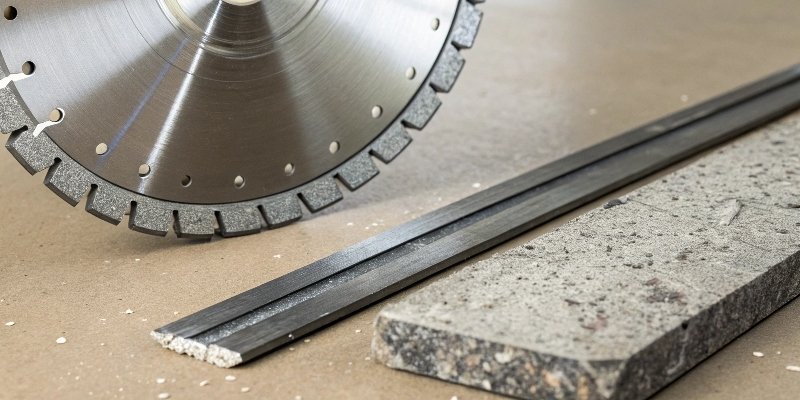
It’s a common question we get from new customers. They associate diamond tools with construction, not metalworking. But the technology has evolved. A diamond blade for cutting concrete is very different from one designed for steel.
How Diamond Blades Cut Steel
It’s all about the bond. In a blade for metal, tiny industrial diamonds5 are bonded to the edge of a steel core. Instead of grinding away material like a traditional abrasive wheel, a diamond blade acts more like a saw with thousands of microscopic teeth. These diamonds shear away tiny chips of the steel. This process is much more efficient. It creates less friction and therefore less heat, which is why a diamond blade is ideal for cutting hardened steel without destroying its temper. At our factory in Henan—the source of 80% of China’s industrial diamonds—we’ve perfected the manufacturing of these specialized blades. They offer a huge performance advantage. A single diamond blade can outlast dozens of abrasive discs, making them a very smart investment for any serious fabrication shop.
Conclusion
Cutting hardened steel is simple with the right diamond disc, proper heat control, and strict safety measures. These steps ensure a clean, professional result every time.
-
Find out about the different types of cutting discs and their specific uses in metalworking. ↩
-
Understand the properties of hardened steel and its applications in various industries. ↩
-
Learn about tool steels and their critical role in manufacturing high-performance tools. ↩
-
Discover the best coolants to use for cutting metal and how they help preserve material integrity. ↩
-
Explore the role of industrial diamonds in manufacturing and their applications in cutting tools. ↩
Written by
leeon
You may also be interested in:

How were wheels used in a mill?
Have you ever seen an old watermill and wondered how that giant, slowly turning wheel managed to do so much work? It’s a powerful image
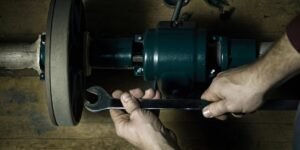
How to tighten a bench grinder wheel?
A wobbly, vibrating grinding wheel is not just annoying; it is a serious safety hazard. The instability can ruin your workpiece and the fear of

What is a finish grinding machine?
Your machined parts have the right dimensions, but their rough surface finish leads to noise, friction, and early failure. This damages your products’ reputation and
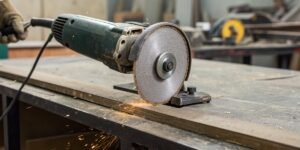
Can I use a bigger disc on an angle grinder?
You need more cutting depth, and the bigger disc on the shelf looks like a fast solution. But forcing a disc that doesn’t belong creates
